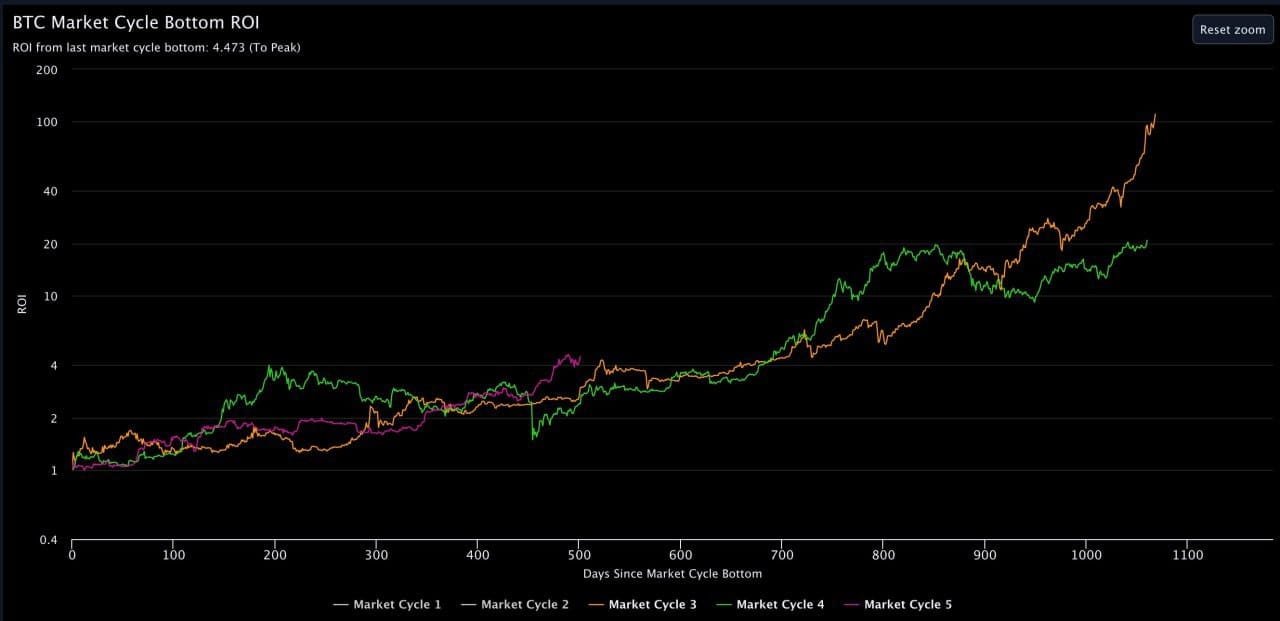Understanding market psychology has always been crucial for successful trading, but nowhere is this more evident than in the volatile world of cryptocurrency. A bitcoin market sentiment indicator serves as your emotional compass in the crypto wilderness, helping you navigate the turbulent waters of digital asset investing. These powerful tools analyze collective market emotions, social media buzz, and trader behavior to provide insights that traditional technical analysis might miss.
The cryptocurrency market operates 24/7, driven largely by emotion, speculation, and crowd psychology. Unlike traditional financial markets, bitcoin and other cryptocurrencies experience extreme volatility that often correlates directly with market sentiment. When fear dominates, prices typically plummet as investors rush for the exits. Conversely, periods of extreme greed often coincide with unsustainable price bubbles that eventually burst.
Modern traders and investors increasingly rely on sophisticated bitcoin market sentiment indicators to time their entries and exits more effectively. These tools aggregate data from multiple sources, including social media platforms, news sentiment, trading volumes, and on-chain metrics to create comprehensive sentiment scores. By understanding how to interpret these indicators, you can potentially identify market turning points before they become obvious to the broader investing public.
Understanding Bitcoin Market Sentiment Fundamentals
Market sentiment in cryptocurrency represents the overall attitude and emotional state of investors toward bitcoin and digital assets. Unlike traditional markets that close on weekends and holidays, crypto sentiment operates continuously, creating unique patterns and opportunities for those who know how to read the signs.
Bitcoin Market Sentiment Indicator tools typically measure sentiment on a scale, often ranging from extreme fear to extreme greed. These measurements help investors understand whether the market is potentially oversold (extreme fear) or overbought (extreme greed), providing contrarian investment signals.
Types of Bitcoin Market Sentiment Indicators
Social Media Sentiment Analysis
Social platforms have become primary battlegrounds for cryptocurrency opinions and discussions. Twitter, Reddit, Telegram, and Discord channels generate massive amounts of sentiment data that sophisticated algorithms can analyze in real-time. Twitter sentiment analysis tools scan millions of tweets daily, analyzing language patterns, emoji usage, and hashtag trends related to bitcoin. Positive sentiment indicators include increased usage of rocket ship emojis, “HODL” terminology, and bullish price predictions. Negative sentiment often manifests through fearful language, selling pressure discussions, and bearish forecasts.
Reddit sentiment analysis focuses on cryptocurrency subreddits like r/Bitcoin and r/CryptoCurrency, where detailed discussions reveal deeper investor psychology. The tone of comments, upvote patterns, and post engagement levels all contribute to overall sentiment scores. Professional sentiment analysis platforms aggregate this social data using natural language processing (NLP) and machine learning algorithms to create comprehensive sentiment scores that traders can use for decision-making.
Fear and Greed Index for Bitcoin
The Crypto Fear and Greed Index has become one of the most widely followed bitcoin market sentiment indicator tools available to traders and investors. This index measures market emotions on a scale from 0 (extreme fear) to 100 (extreme greed), providing a quick snapshot of overall market psychology.
The index incorporates multiple data sources including volatility measurements, market momentum and volume, social media sentiment, Bitcoin dominance levels, and Google Trends data. Each component receives specific weighting to create the final sentiment score. Extreme fear readings (0-25) often coincide with market bottoms, as widespread panic selling creates attractive buying opportunities for contrarian investors. Historical data shows that some of the best long-term entry points occurred during periods of extreme fear.
Extreme greed readings (75-100) frequently align with market tops, as euphoric buying and FOMO (fear of missing out) drive prices to unsustainable levels. Experienced traders often use these periods to take profits or reduce position sizes. The middle ranges (26-74) indicate more balanced market conditions where sentiment isn’t providing clear contrarian signals. During these periods, traders typically rely more heavily on technical analysis and fundamental factors.
On-Chain Sentiment Metrics
Blockchain technology provides unprecedented transparency into bitcoin holder behavior, creating unique sentiment indicators unavailable in traditional markets. On-chain metrics reveal what bitcoin holders are doing with their assets, not just what they’re saying about them. Long-term holder (LTH) behavior provides crucial sentiment insights. When long-term holders begin selling significant amounts of bitcoin, it often indicates a shift from accumulation to distribution phases. Conversely, increased long-term holding suggests confidence in future price appreciation.
Exchange inflow and outflow data reveals sentiment through action. Large inflows to exchanges might indicate selling pressure, while significant outflows suggest investors are moving bitcoin to cold storage for long-term holding. The Network Value to Transactions (NVT) ratio helps identify whether bitcoin is overvalued or undervalued relative to its utility, providing sentiment context for price movements. High NVT ratios might indicate speculative bubbles, while low ratios could suggest undervaluation.
How to Read Bitcoin Sentiment Signals

Interpreting Fear and Greed Levels
Reading sentiment indicators effectively requires understanding that extreme readings often provide the most actionable signals. The contrarian principle suggests that when everyone feels the same way about an asset, the opposite outcome becomes more likely. During extreme fear periods, negative news dominates headlines, social media buzzes with doom predictions, and many investors panic-sell their positions. These conditions often create the best buying opportunities for patient investors with strong conviction and risk management skills.
Extreme greed phases feature opposite characteristics: overwhelmingly positive news coverage, social media filled with price predictions and “get rich quick” stories, and widespread FOMO driving new investor influx. These periods require caution and often present optimal selling opportunities. Moderate sentiment readings require more nuanced interpretation. Gradual shifts from fear toward greed might indicate emerging bullish trends, while movement from greed toward fear could signal developing bearish conditions.
Combining Multiple Sentiment Sources
Professional traders rarely rely on single sentiment indicators, instead combining multiple data sources for more robust analysis. This multi-factor approach helps filter out noise and identify more reliable sentiment signals. Combining social media sentiment with on-chain metrics provides both emotional and behavioral insights. For example, bearish social sentiment combined with increasing long-term holder accumulation might suggest smart money is buying while retail investors remain fearful.
News sentiment analysis paired with trading volume data reveals whether sentiment shifts are backed by meaningful capital flows. Strong volume accompanying sentiment changes increases signal reliability compared to sentiment shifts on low volume. Cross-referencing sentiment indicators with traditional technical analysis creates comprehensive market perspectives. Bullish sentiment combined with technical breakouts often produces stronger price movements than either signal alone.
Popular Bitcoin Market Sentiment Tools and Platforms
Alternative.me Crypto Fear and Greed Index
Alternative.me operates the most widely recognized crypto fear and greed index, updating daily with fresh sentiment data. Their methodology combines volatility analysis (25% weighting), market momentum and volume (25%), social media analysis (15%), surveys (15%), Bitcoin dominance (10%), and Google Trends (10%). The platform provides historical data allowing users to backtest sentiment-based trading strategies.
Visual charts display sentiment evolution over time, helping identify patterns and recurring cycles in market psychology. Mobile applications and API access enable real-time sentiment monitoring for active traders. Email alerts notify users when sentiment reaches extreme levels, providing timely trading signals.
Santiment Network
Santiment offers comprehensive on-chain and social sentiment analysis for bitcoin and other cryptocurrencies. Their platform combines blockchain data with social media sentiment, news analysis, and development activity metrics. Advanced features include whale transaction tracking, which reveals large holder behavior patterns that often precede significant price movements.
Social volume metrics measure discussion intensity across platforms, while sentiment analysis determines whether conversations are positive or negative. The platform’s “crowd sentiment” tools identify when retail investors are most bullish or bearish, enabling contrarian trading strategies. Professional traders use these insights to position against retail crowd behavior.
Glassnode Analytics
Glassnode specializes in on-chain analytics that reveal bitcoin holder sentiment through behavior analysis. Their metrics include long-term holder supply changes, exchange flow data, and realized profit/loss calculations. The platform’s “hodler psychology” metrics track confidence levels among different investor cohorts.
Newer investors typically exhibit more emotional behavior, while experienced holders show steadier accumulation patterns. Advanced users access detailed cohort analysis, revealing how different groups of bitcoin holders respond to price movements. This granular data helps identify which investor types are driving market movements.
Trading Strategies Using Bitcoin Sentiment Analysis
Contrarian Investment Approaches
Contrarian trading strategies assume that extreme sentiment readings often mark market turning points. When fear dominates and sentiment indicators show extreme pessimism, contrarian investors begin accumulating positions, anticipating eventual sentiment recovery. Successful contrarian trading requires patience and strong risk management. Markets can remain oversold or overbought longer than many traders expect, making position sizing and entry timing crucial for success.
Dollar-cost averaging during extreme fear periods helps smooth entry prices while sentiment gradually recovers. This approach reduces timing pressure while maintaining exposure to potential rebounds. Conversely, extreme greed periods present opportunities to reduce position sizes or take profits. Contrarian traders often sell into strength when euphoria dominates market sentiment.
Trend Following with Sentiment Confirmation
Trend following strategies use sentiment indicators to confirm directional moves rather than predict reversals. Rising sentiment combined with upward price trends suggests stronger, more sustainable moves.Sentiment divergences can signal weakening trends before price action reflects changing conditions. For example, declining sentiment during continued price advances might warn of impending corrections.
Entry timing improves when sentiment aligns with technical indicators. Bullish sentiment breakouts combined with price breakouts often produce more reliable trading signals than either factor independently. Stop-loss levels can be adjusted based on sentiment conditions. During periods of extreme fear, wider stops might be appropriate as volatility increases, while tight stops work better during stable sentiment periods.
Risk Management Based on Market Emotions
Position sizing should adjust based on prevailing sentiment conditions. During extreme fear, when potential opportunities are greatest, larger position sizes might be justified despite higher volatility. Extreme greed periods warrant more conservative position sizing as downside risks increase. Professional traders often reduce leverage and overall exposure when euphoria dominates market psychology.
Correlation analysis helps manage portfolio risk during different sentiment regimes. During extreme fear, most crypto assets tend to move together, reducing diversification benefits within the cryptocurrency space. Time-based risk management adjusts holding periods based on sentiment cycles. Quick profits might be appropriate during volatile sentiment swings, while longer holding periods work better during stable conditions.
Bitcoin Sentiment Analysis in Different Market Cycles

Bull Market Sentiment Patterns
Bull markets typically progress through distinct sentiment phases, beginning with skepticism among mainstream investors while early adopters accumulate positions. Initial price advances often occur amid relatively neutral or slightly negative sentiment. As bull markets mature, sentiment gradually improves, with social media discussions becoming more positive and mainstream media coverage increasing. Fear and greed indices shift from neutral toward moderate greed levels.
Late-stage bull markets feature extreme greed, widespread FOMO, and parabolic price increases. New investor influx accelerates, social media fills with success stories, and even traditionally conservative investors begin exploring cryptocurrency investments. Understanding these patterns helps investors position appropriately for different bull market phases. Early phases favor accumulation strategies, while late phases require profit-taking and risk reduction approaches.
Bear Market Psychology
Bear markets begin with sentiment shifts from extreme greed toward neutral levels as early investors begin taking profits. Initial price declines often face strong buying interest from investors who missed earlier opportunities. Extended bear markets feature gradually deteriorating sentiment as hope turns to fear, then potentially to capitulation. Social media discussions become increasingly negative, mainstream media focuses on cryptocurrency failures, and many investors abandon the market entirely.
Capitulation phases represent maximum pessimism, with sentiment indicators showing extreme fear for extended periods. These phases often coincide with market bottoms, though timing exact reversals remains challenging. Recovery phases feature gradual sentiment improvement as prices stabilize and early buyers return to the market. Patient investors who accumulated during extreme fear periods often benefit most from eventual recoveries.
Advanced Sentiment Analysis Techniques
Machine Learning and AI Applications
Modern sentiment analysis increasingly relies on machine learning algorithms that can process vast amounts of unstructured data from social media, news sources, and blockchain networks. These systems identify subtle patterns and correlations that human analysts might miss. Natural language processing (NLP) technologies analyze text sentiment with increasing sophistication, understanding context, sarcasm, and implied meanings that simple keyword searches cannot detect. Advanced systems even analyze emoji usage patterns and meme proliferation as sentiment indicators.
Predictive models combine historical sentiment data with price movements to forecast potential market directions. While not perfectly accurate, these models help identify higher-probability trading setups and risk scenarios. Real-time sentiment analysis provides immediate feedback as market conditions change, enabling rapid strategy adjustments. Professional trading firms increasingly integrate these tools into automated trading systems.
Cross-Asset Sentiment Correlation
Bitcoin sentiment often correlates with broader financial market emotions, particularly during stress periods when correlations between asset classes increase. Understanding these relationships helps predict bitcoin sentiment changes based on traditional market movements. During market stress, bitcoin sometimes behaves as a risk-off asset, with sentiment following broader market fear. Other times, it acts as a risk-on asset, with sentiment improving alongside equity markets.
Macroeconomic events significantly impact crypto sentiment, particularly monetary policy changes, inflation data, and geopolitical developments. Traders monitor these factors to anticipate sentiment shifts before they fully manifest in crypto-specific indicators. Gold and bitcoin sentiment sometimes show inverse relationships, as both assets compete for “alternative investment” capital during uncertain economic periods.
Common Mistakes in Sentiment Analysis
Over-Relying on Single Indicators
Many novice traders make the mistake of basing decisions solely on one sentiment indicator, ignoring the complex, multi-faceted nature of market psychology. Single indicators can provide false signals, particularly during unusual market conditions. Successful sentiment analysis requires combining multiple data sources and confirming signals across different timeframes. Short-term sentiment spikes might not reflect longer-term psychological trends that drive sustained price movements.
Context matters significantly in sentiment interpretation. The same sentiment reading might have different implications depending on recent market history, current price levels, and broader economic conditions. Professional traders develop systematic approaches that weight different sentiment factors based on historical reliability and current market conditions.
Also Read: Bitcoin Resistance and Support Levels The Complete Guide to Technical Analysis for Crypto Traders
Misunderstanding Sentiment Timing
Sentiment indicators often work on different timeframes than many traders expect. Extreme fear readings might persist for weeks or months before markets bottom, while extreme greed can continue longer than seems rational. Early sentiment shifts don’t guarantee immediate price responses. Markets need time to process new information and for sentiment changes to translate into actual buying or selling behavior.
Sentiment analysis works best for identifying general market conditions and potential turning points rather than precise entry and exit timing. Combining sentiment with technical analysis improves timing precision. Understanding sentiment lag effects is crucial, as price movements often precede sentiment changes rather than following them immediately.
Future of Bitcoin Market Sentiment Analysis

Emerging Technologies and Data Sources
Artificial intelligence and machine learning continue revolutionizing sentiment analysis capabilities. New algorithms can process increasingly complex data sets, including video content analysis, voice pattern recognition, and behavioral biometrics. Blockchain analytics are becoming more sophisticated, with new metrics revealing previously hidden aspects of holder behavior and network psychology. Lightning Network data, smart contract interactions, and cross-chain transaction analysis provide additional sentiment insights.
Integration with traditional financial data creates more comprehensive market psychology pictures. Combining crypto sentiment with equity market fear indices, bond market signals, and currency volatility measures improves predictive accuracy. Real-time news sentiment analysis using advanced NLP technologies can identify market-moving events and sentiment shifts within minutes of occurrence, providing significant advantages to rapid-response trading strategies.
Regulatory Impact on Sentiment
Evolving cryptocurrency regulations significantly impact market sentiment, with regulatory clarity generally improving long-term confidence while uncertainty creates fear and volatility. Institutional adoption continues reshaping sentiment dynamics as professional investors bring different psychological patterns compared to retail traders. Understanding these evolving dynamics becomes crucial for accurate sentiment analysis.
Central bank digital currency (CBDC) developments influence bitcoin sentiment as governments explore digital alternatives to traditional cryptocurrencies. Global regulatory coordination efforts will likely create more stable sentiment environments over time, though short-term regulatory announcements will continue generating significant sentiment volatility.
Practical Implementation Guide
Setting Up Sentiment Monitoring Systems
Effective sentiment monitoring requires systematic approaches that track multiple indicators across different timeframes. Daily routines should include checking major sentiment indices, reviewing social media trends, and analyzing on-chain metrics. Alert systems help capture important sentiment changes without requiring constant monitoring. Setting notifications for extreme fear or greed levels enables timely response to potential trading opportunities.
Portfolio tracking should incorporate sentiment analysis alongside traditional performance metrics. Understanding how sentiment changes affect portfolio values helps improve future positioning decisions. Documentation of sentiment patterns and personal trading responses builds valuable experience databases for improving future decision-making.
Creating Personal Sentiment Strategies
Successful sentiment-based trading requires developing personalized strategies that match individual risk tolerance, time availability, and investment goals. Conservative investors might focus on long-term sentiment trends, while active traders could capitalize on short-term sentiment swings. Backtesting sentiment strategies using historical data helps identify which approaches work best for different market conditions.
This analysis reveals optimal position sizing, entry timing, and exit strategies for various sentiment scenarios. Risk management rules should explicitly address sentiment-based positions, including maximum position sizes during extreme sentiment periods and stop-loss levels adjusted for sentiment-driven volatility.
Conclusion
Mastering bitcoin market sentiment indicator analysis provides significant advantages in cryptocurrency trading and investing. These tools offer unique insights into market psychology that traditional analysis methods cannot capture, helping identify potential turning points and optimize entry and exit timing.
Success with sentiment analysis requires understanding that these indicators work best as part of comprehensive analysis frameworks rather than standalone decision-making tools. Combining sentiment data with technical analysis, fundamental research, and sound risk management creates robust investment strategies suitable for various market conditions.
The cryptocurrency market’s emotional nature makes sentiment analysis particularly valuable, but also requires careful interpretation and patience. Extreme sentiment readings often provide the best contrarian opportunities, though timing requires skill and experience to execute effectively.

